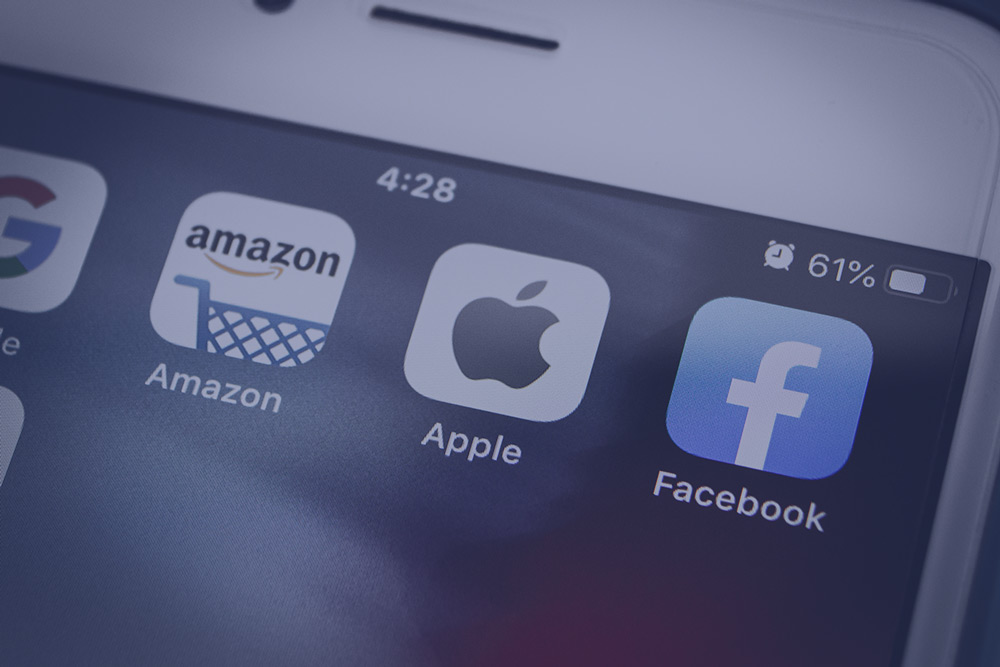Digital banking is reaching a point of no return. For years now, the digital trends have been pushing at greater speeds toward digitalization, with customer preferences firmly shifting in favor of faster and more varied service options. Across demographics, the experience needs to be omnichannel – meaning that customers enjoy a flexible, seamless, and streamlined service on the communication channel of their choosing.
However, there are still plenty of questions, challenges, and uncertainties that are standing in the way of true digital transformation. The current state of digital banking is defined by interplays between challenges and opportunities; speed and caution; and technology and traditional, in-person authenticity.
Online banking service statistics reveal a lot about our current context and the successes and failures that are shaping the new face of digital services in the finance sector.
Customer loyalty in banking
A key purpose of digital banking platforms is to drive customer satisfaction and, by extension, loyalty. However, banks in Europe are struggling to perform well on emotion. According to Forrester, while 62% of banking customers say they’ve had an “effective” experience, only 48% said it was “emotionally positive.”
This is important because emotion – where customers feel understood, respected, confident, valued and appreciated – is the primary determinant of loyalty. By experiencing just one of these emotions, according to Forrester, 69% or more would remain with the brand, 65% would invest more in the brand and 62% would become brand advocates.
However, across six European countries, no more than one in five survey respondents stated feeling even one of those five emotions. Conversely, disappointment, frustration, neglect, annoyance, and anger are the main reasons that people leave brands. In fact, 43% of banking customers who experience one of these feelings would remain with the brand.
Areas of progress in digital banking platforms
That said, there has been significant progress in digital banking experiences. In total, 71% of global businesses are now digital, and financial services institutions have no choice but to continue their expansion efforts.
Most banks have reached a certain level of maturity with their initiatives and the focus is shifting from digital transformation to digital continuation. In fact, over 53% of bank decision-makers claim that they are improving their digital transformation efforts, an increase of 20% since 2021.
The main reason banks are investing in digital is to increase revenue, with 77% claiming it’s their primary goal. That said, there is also a huge amount of focus being placed on improving the customer experience, reducing costs, increasing operational resilience, and strengthening regulatory compliance.
Some traditional banks are falling behind
However, some banks are still lagging behind in this regard. Incredibly, there are still traditional banks (if just 1%) that have no interest in digital transformation, with a further 8% currently without implementation plans.
A reported 10% have only got their initiatives in the planning stage, which brings the total to 19% of surveyed banks who are behind where they need to be.
The reason for the lack of progression is challenges surrounding the strategy, with 33% claiming that this is holding them back, alongside 29% and 27% of respondents who say that data and project management are affecting progress.
New explorations of physical and digital experiences
In 2024, we’re seeing a further blending of the physical and digital to better respond to customer demands.
Physical branch closures even off
One area that has been under strain is brick-and-mortar bank branches, which have been struggling to survive in recent years. However, this trend may begin to ease as customers still have a baseline need for branches and as new, financially viable network models are explored.
The customer demand is not insignificant, with 72% of survey respondents saying that they will use their local branch with the same frequency as the previous year – and 38% saying that branches are essential. There are also regional variations. In Britain and Germany, most online banking customers use digital channels to open accounts. In France and Italy, however, in-person branches remain the main means for account opening. In general, branches have been shown to be a key contributor to loyalty and satisfaction, promoting the sense of trust that is all so important.
Customer branch preferences
But what do customers want from their branches? The most requested feature was self-service tools, with 64% of customers saying this was what they wanted. It’s in this context that digital banking services are making their way into physical spaces.
There have been different approaches to overcoming this challenge. For some, it’s a matter of moving from branch-centric inbound models to more digital, outbound approaches. Others, however, are installing digital channels to augment physical experiences, which leads to a more cost-effective and profitable branch network.
An increase in mobile banking users
Whether influenced by trust issues, technological constraints, or behavioral hangovers from traditional banking methods, digital banking users have been hesitant to use mobile applications for intricate financial transactions or activities.
This appears to be changing, however, as customers become more comfortable with mobile banking apps and internet banking tools even for complex tasks. According to Forrester, in 2022, 51% of relevant UK adults with internet access researched taking out a loan on a smartphone – a notable increase from the 34% recorded in 2021. Notably, 34% of applicants completed the loan application process using their smartphones, with an additional 14% opting for the mobile app route .
It is becoming increasingly apparent that there is a growing reliance on mobile banking apps. Mobile banking is of course a prerequisite for financial services, and so the competition is now moving to superior user experience. Financial organizations that can deliver a seamless, unified, and comprehensive experience are set to stand out in the coming year.
Enhanced mobile collaboration
As an extension of this, there appears to be a greater need for enhanced collaboration experiences made specifically for mobile banking apps. To fill this service void, Mobile Co-Browsing or Co-Apping is becoming more popular.
The remote collaboration solution, where agents and customers can interact on an app in a secure environment, remained underutilized. But those that have embraced Co-Apping are seeing incredible results.
An Unblu customer recently reported that their agents initiated 300,000 Co-Apping sessions to address customer issues in the first year of implementation, compared to around 65,000 traditional Co-Browsing sessions during the same timeframe.
Generative AI: Challenges and opportunities
No look at 2024 would be complete without looking at the role advanced technologies like Generative AI is set to play. Much of this is positive, with the advances in digital technology set to transform all industries. McKinsey claims that two-thirds of senior digital and analytics leaders believe that Gen AI will change their business practices in a fundamental way. This is unsurprising as, in the corporate and retail banking sectors alone, the technology could add $56 billion and $54 billion respectively to the market. However, it also brings a substantial amount of risk with it.
According to Forrester, at least eight neobanks and two traditional banks will suffer from a disaster that’s directly related to Generative AI. Although banks are controlling their pilot programs closely, it only takes one negligent individual to expose them to risk, whether in the form of breached copyright, leaking customer information, unchecked bias, or more. Consequently, industry observers are urging governments to bring in new regulations to combat this.
Gen AI also brings opportunities
The benefits, however, should also be acknowledged as Gen AI genuinely does hold a huge amount of potential. In fact, organizations that fail to embrace it will likely suffer as a result. The approach, at least for now, should be to use very specific use cases that are controlled and valuable.
One example of this is Unblu’s Conversational AI offering, which uses LLMs that draw on companies’ existing knowledge base, which allows them to better serve customers with accurate chatbot advice.
Another use case that is proving effective is the bot trainer assistant, which is where the chatbot helps to train itself. Chatbots work using what’s called “intents” – where customer questions and the corresponding responses are logged in the system. By suggesting possible intents (which are verified by humans) the chatbot can make it easier to improve Live Chat efficiency and accuracy. This results in a stronger self-service offering that reduces strain on certain channels, while still ensuring there is access to human support when needed.
Online banking experiences and Unblu
The changing context in digital banking is proving challenging for traditional banks and digital banks alike. Online banking statistics are clearly showing that digital banking services must be exceptional to meet customer expectations.
The fact is, the number of digital banking channel users is growing and providing top conversational banking capabilities is the only way to ensure customer satisfaction. Of course, this is easier said than done. The nature of competition is moving more towards the granular level, with mobile banking services, digital tools, digital platforms and more having to offer a greater service experience to stand out. Combined with enhanced focus on security measures and regulations, the digital banking landscape is undoubtedly complex.
That said, the banks that are able to keep ahead of digital banking trends and offer convenient access to support will gain the loyalty of digital banking users and succeed in 2024.
Want to find out more?
Reach out to us today for more information or to schedule a demo




 Interaction Management Hub
Interaction Management Hub Secure Messenger
Secure Messenger Video & Voice
Video & Voice



